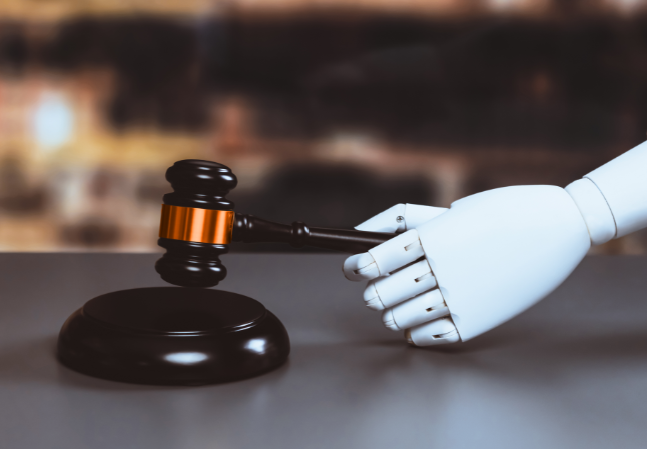- videocam Live Webinar with Live Q&A
- calendar_month October 29, 2025 @ 1:00 p.m. ET./10:00 a.m. PT
- signal_cellular_alt Intermediate
- card_travel Personal Injury and Med Mal
- schedule 90 minutes
Motor Vehicle and Premises Liability Complexities Resulting From Low-Light Conditions
Welcome! Save 30% on all CLE, CPE, and Professional Skills webinars, plus 15% off any annual pass with code HOLIDAY25
About the Course
Introduction
This CLE webinar will provide guidance for investigating and trying personal injury cases in which low illumination is a factor in liability, focusing on motor vehicle accidents and premises liability incidents. The panel will offer best practices for investigating these cases, review the types of experts often retained, and explore overcoming challenges with accident reconstruction.
Description
When someone is injured in an accident on a dark road or in a poorly lit parking lot, determining liability becomes a complex issue. Many lawyers overlook how important lighting, or the lack of it, is. Understanding the science of low illumination on visibility, perception, and reaction time is essential. Investigation of the incident itself can be challenging. The same visibility and perception challenges also affect witnesses.
Both the injuring and the injured party are expected to adjust to prevailing conditions and both may be at fault whether the incident is a car wreck, a slip and fall, or pedestrian injury. Comparative negligence and apportionment play pivotal roles in these cases. Experts are often needed to determine how much time a driver or pedestrian had to react, and that means being able to deftly handle Daubert and FRE 702 issues.
Counsel in these cases must always consider whether third parties are also liable. Many county and city ordinances specify lighting requirements, so being able to research these is important to case evaluation. Property owners, municipalities, and other third parties that fail to comply or maintain proper lighting may be additional defendants.
Listen as our renowned panel of vehicle accident and premises liability attorneys discusses how low-light conditions affect case evaluation and liability, and offers insights for navigating the nuances of these common but complex cases.
Presented By

Dr. Grugle is a human factors expert who specializes in cases involving human performance and behavior, particularly in motor vehicle collisions. Her areas of specialization include fatigue, sleep deprivation, and drowsy driving, as well as distracted driving, looming, visibility/conspicuity, and driver actions. Dr. Grugle has conducted hundreds of forensic investigations on cases involving these issues as well as cases involving roadway design (expectancy and positive guidance), and driver assistance technologies (forward collision warning, lane departure warning). Dr. Grugle is a Board-Certified Human Factors Professional (CHFP) with over 20 years of academic, research, industry, and forensic experience in human factors engineering. She was awarded competitive human factors research grants from the National Science Foundation, the Ohio Department of Transportation, and the Cleveland State University Transportation Center and her research has been published in national and international peer-reviewed journals. Dr. Grugle conducts investigations for both plaintiff and defense counsel and has testified in both state and federal courts.

Mr. Kemp is an attorney in the firm’s litigation division. He has been with the firm for several years, beginning as a law clerk. While in law school, Mr. Kemp had the opportunity to first chair a felony jury trial at the Wayne County Prosecutor’s Office in Detroit. Prior to attending law school, he was a judicial intern for the Honorable Ronald Lowe in the 35th District Court.

Mr. Servais is dedicated to protecting and representing individuals seriously injured in motor vehicle accidents. He is a tenacious advocate who is deeply passionate about holding negligent drivers and trucking companies accountable for the harms and losses they cause when innocent people get hurt. Mr. Servais specializes in first-party auto accident cases for unpaid No-Fault PIP benefits and third-party auto accident cases for pain and suffering compensation throughout Metro Detroit and southeastern Michigan. Committed to protecting his clients’ legal rights, he prides himself on truly helping people and making a real difference in their lives, all while striving to secure the best possible settlement results in their cases. Mr. Servais has been named to DBusiness Magazine’s list of Top Lawyers in Metro Detroit for 2025.
-
This 90-minute webinar is eligible in most states for 1.5 CLE credits.
-
Live Online
On Demand
Date + Time
- event
Wednesday, October 29, 2025
- schedule
1:00 p.m. ET./10:00 a.m. PT
I. Defining low illumination
II. Investigation challenges
III. Identifying all defendants
IV. Establishing the standard of care owed to plaintiff and its breach
V. Role of experts
VI. Contending with contributory and comparative negligence
The panel will review these and other significant issues:
- Why are vehicle accidents that occur at night three times more deadly?
- If a governmental unit may be liable, what additional steps must a plaintiff's lawyer take?
- Is there a standard for "low illumination," and who sets it?
Unlimited access to premium CLE courses:
- Annual access
- Available live and on-demand
- Best for attorneys and legal professionals
Unlimited access to premium CPE courses.:
- Annual access
- Available live and on-demand
- Best for CPAs and tax professionals
Unlimited access to premium CLE, CPE, Professional Skills and Practice-Ready courses.:
- Annual access
- Available live and on-demand
- Best for legal, accounting, and tax professionals
Unlimited access to Professional Skills and Practice-Ready courses:
- Annual access
- Available on-demand
- Best for new attorneys
Related Courses

Medicare and Medicaid 2026 Reimbursement Requirements: Key Changes Affecting Personal Injury Lawyers
Thursday, January 29, 2026
1:00 p.m. ET/10:00 a.m. PT

Nursing Home Injury Litigation: Common Claims, Medical Records, and Damages Assessment
Tuesday, January 27, 2026
1:00 p.m. ET./10:00 a.m. PT
Recommended Resources

Making Continuing Education Work for You, Anytime, Anywhere
- Learning & Development
- Career Advancement

Getting the Most Out of BARBRI Resources
- Learning & Development
- Business & Professional Skills
- Talent Development

